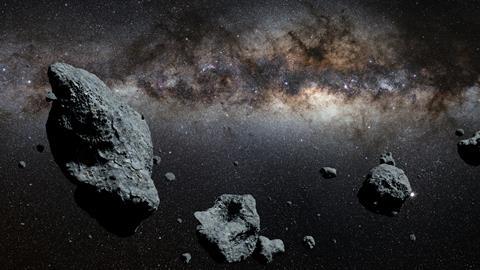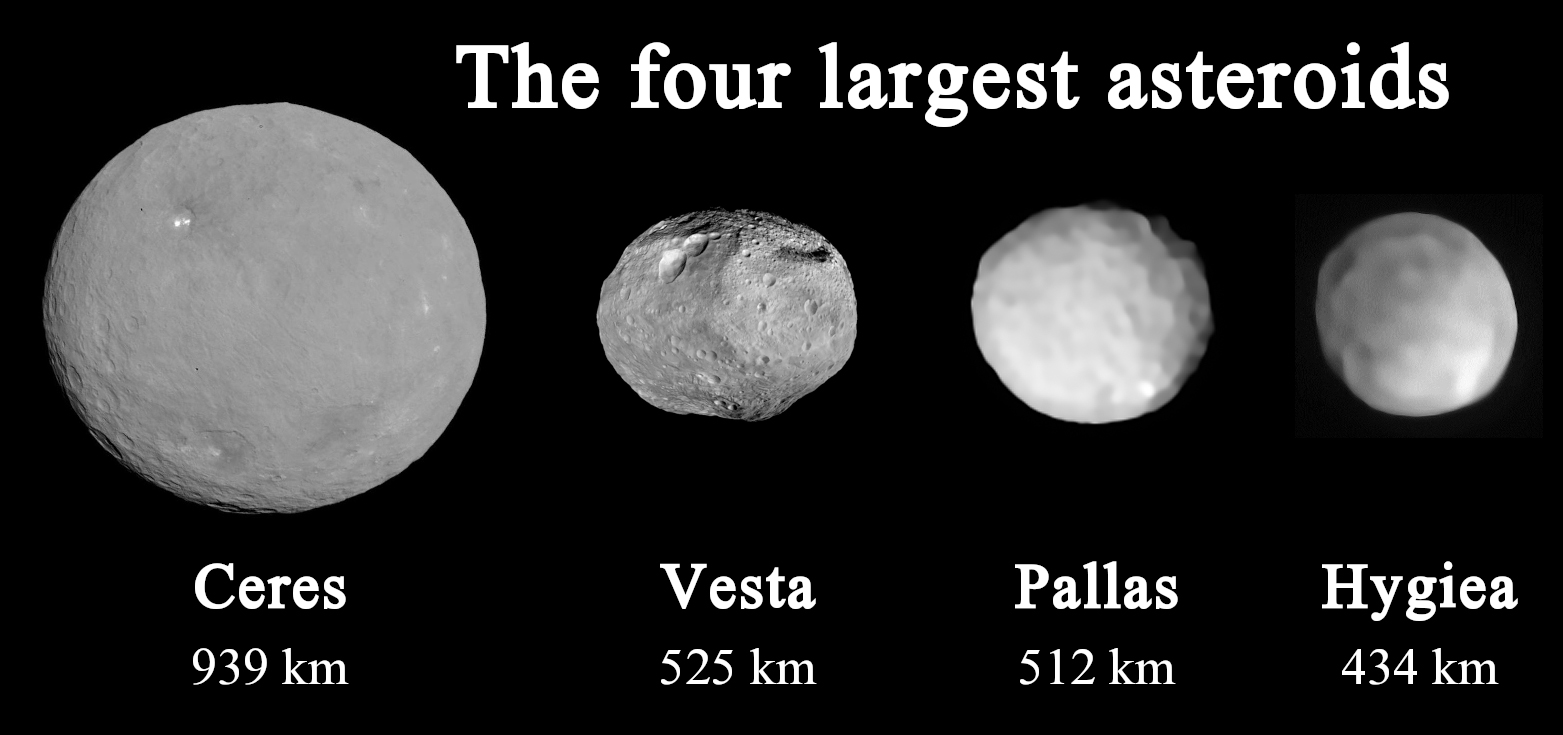Asteroids
Asteroids expaination
Asteroids are small, rocky objects that orbit the Sun. Although asteroids orbit the Sun like planets, they are much smaller than planets. There are lots of asteroids in our solar system. Most of them are located in the main asteroid belt – a region between the orbits of Mars and Jupiter.

largest Asteroids
Ceres, Pallas, and Vesta are the three largest asteroids. Even though they are much smaller than the planets (Ceres, the largest asteroid, has only 1% the mass of the Moon), they are still capable of causing changes in the orbits of Mars and the Earth.

Smallest Asteroids
2015 TC25, which rotates once every 133 seconds, is only about 6 feet (2 meters) in diameter, making it the smallest asteroid ever mineralogically characterized with a ground-based telescope.
Dimorphos is a small asteroid satellite that was discovered in 2003.

Classification of asteroids
In the mid-1970s astronomers using information gathered from studies of colour, spectral reflectance, and albedo recognized that asteroids could be grouped into three broad taxonomic classes, designated C, S, and M. At that time they estimated that about 75 percent belonged to class C, 15 percent to class S, and 5 percent to class M. The remaining 5 percent were unclassifiable because of either poor data or genuinely unusual properties.
Furthermore, they noted that the S class dominated the population at the inner edge of the asteroid belt, whereas the C class was dominant in the middle and outer regions of the belt.Within a decade that taxonomic system was expanded, and it was recognized that the asteroid belt comprised overlapping rings of differing taxonomic classes, with classes designated S, C, P, and D dominating the populations at distances from the Sun of about 2, 3, 4, and 5 AU, respectively. As more data became available from further observations, additional minor classes were recognized.